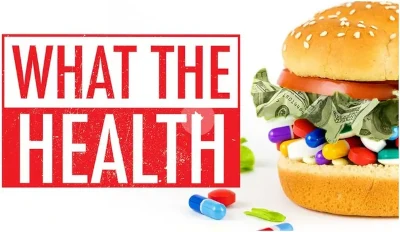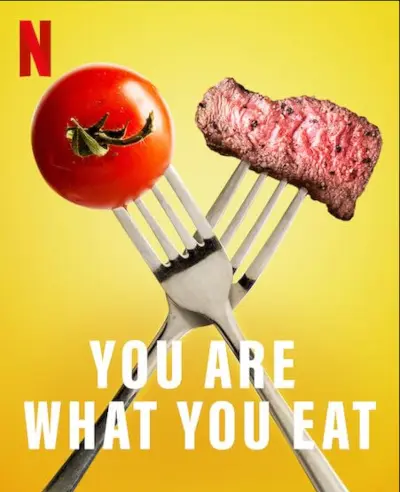Personal Health Audit #
A few hundred years ago, it was easy to know whether your physical health was threatened. Fell off a tree 🌳 and broke your arm? Hard to miss. With modern medicine 💊, we now know a lot about treating acute insults. Treatments often work well; people often recover. The main threat to physical health in modern times is stealth, chronic illness. 🥷🏻 In the United States, heart disease and cancer kill about 3 in a 1000 every year, and there is often not much warning. Most deaths due to heart disease are sudden. ❤️🩹 Especially young adults less than 40 years old often feel suffused with vibrant healthy energy. ⚡ Is your body lying to you about your health? Fortunately, there are some simple measurements that can reveal signs of stealth chronic disease progression.
I don’t want to read all this. What kind of diet do you advocate?
Ad libitum, low fat diet
All you can eat? I don’t need to count calories or refrain from eating to surfeit?
Yep, that’s correct. The key is to choose foods by calorie density. Most likely, you may actually eat a greater volume of food (median food intake of 2776 vs 2974 grams per day).1
About me #
I earned a Ph.D., but I am not a medical doctor or dietician. I have studied nutrition as a hobby for many years and am trained to evaluate statistical evidence. My views are aligned with scientific professional organizations such as International Journal of Disease Reversal and Prevention and American College of Lifestyle Medicine; and a variety of well known researchers in the field of nutrition such as Caldwell B. Esselstyn, Neal Barnard, Dean Ornish, T. Colin Campbell, and John McDougall. There is actually little scientific disagreement that a plant-based diet is the only diet proven to reverse cardiovascular disease. Based on this single fact alone, a plant-based diet should be our default diet until more evidence is available.
In interests of full disclosure, I have a special relationship with Michael Greger, an eminent nutrition researcher. My grandfather, Nathan Pritikin, helped treat Michael Greger’s grandmother for cardiovascular disease and, thereby, inspired Dr. Greger to become a medical doctor. Dr. Greger is deeply committed to the dissemination of research. For example, his recent book How Not to Diet cites 4990 scientific articles. 🤯 I follow Dr. Greger closely and feel confident to rely on his many research summaries.
An easy way to learn more about nutrition is to watch some outstanding feature documentaries:
🎥
Easy Quantification of Physical Health #
The Measures 📐 #
Don’t despair if you fail on some of the measures below. By definition, chronic disease takes a long time to kill you. You probably have at least a few years to figure out how to successfully address these risk factors.
I’m ready, show me the measures!
Here we go:
waist circumference < 0.5 height #
When discussing obesity, people often focus on body weight (a measure of mass). Indeed, obesity is associated with immune system dysfunction and kidney and liver disease; gallstones, acid reflux, and cardiovascular disease; dementia, brain function, and fertility; and back pain, blood pressure, cancer, and diabetes. However, measures of body mass (including the popular body mass index metric) confound mass due to muscle and mass due to fat. Needless to say, a heavy and muscular upper body with ripped six pack abs is not a sign of poor health. Moreover, it is not so much body fat, but visceral body fat, abdominal fat, the fat around our internal organs, that most increases our risk of dying prematurely. In a meta analysis of 78 studies, waist to height ratio was found to be a better predictor of cardiometabolic outcomes than body mass index, with a recommended threshold of 0.5. You can easily eyeball or use a tape measure to assess body shape, no weight scale required.
resting heart rate <= 60 #
Your heart has got a tough job; it has to work 24 hours a day, every day, without a break. In addition, your heart must adjust to changes in demand depending on your physical activity. Jumping rope takes a lot more blood circulation than loafing on the couch. In addition to gross changes in demand, your heart reacts to subtle changes in demand. One way to quantify the responsiveness of the heart is heart-rate variability (HRV). To measure HRV, you need a high accuracy monitor and some software to process the signal. HRV is a measure of physical conditioning that may be informative to elite athletes, but desk jockeys should focus on the simple measure of resting, or minimum, heart rate. Minimum heart rate can be measured by counting the number of pulses while you are feeling chill and relaxed. If you find that your minimum heart rate is too high, consider beans and aerobic exercise. The difference between a resting heart rate of 60 and 70 bpm can add up to a decade or more, over a lifespan.
bowel movements per week > 7 #
It is not toilet humor; bowel movements are serious business. If you are not averaging at least one bowel movement per day then you are not eating enough fiber. The best sources of fiber are whole, intact grains and legumes (intact or not). Fruits and vegetables also offer a decent amount. Fiber gets rid of excess bile, feeds our good bacteria, changes our gut hormones, which collectively helps control our cholesterol, and body weight, blood sugar, and blood pressure, which reduces the risk for cardiovascular disease. Easy to measure; easy to remediate.
blood pressure < 110/70 #
Blood pressure measurements consist of two numbers: systolic and diastolic pressure, usually reported in mm Hg units. Systolic pressure is the higher number registered when your heart is exerting maximum force. Diastolic pressure is registered when your heart is resting. These two numbers generally have a high positive correlation, r > .5 in 95% of patients. The pulse width (systolic - diastolic) should be about 35-40 units. Blood pressure varies by aerobic demand and the condition of your blood vessels. What we really want to know is your minimum blood pressure. So get comfortable, relax, and take the minimum of multiple trials. Although machines are often available in retail establishments, a supermarket or drug store is probably not the best place to conduct accurate measurement. It is challenging to get accurate readings from a sphygmomanometer; fortunately, there are now cheap digital arm cuff devices that make home measurement pretty foolproof. I would be skeptical of measurements taken at a doctor’s office because they can be sloppy and rushed. Blood pressure is important to measure because pressures above 110/70 are assocated with an increased risk of stroke. Stealth, non-lethal brain shrinkage is also possible.
4.7 <= white blood count < 6 #
White blood cells are a component of your blood associated with disease and inflamation. White blood count (WBC) is a measure of the number of white blood cells per standardized volume of blood. Although external wounds (e.g. puncture or laceration) can lead to inflamation, WBC is a global measure of internal and external inflamation. WBC is particularly useful because it can be an indicator of internal, stealth inflamation that has no externally visible sign. In the United States, insurance providers will usually pay annually for a preventative complete blood count with differential analysis that includes WBC. You generally want your WBC as low as possible, near the lower limit of the normal range at 4.8.
LDL < 100, LDL < 70 #
LDL is an acronym for low-density lipoprotein. Lipoprotein is a category of substances made of protein designed to transport cholesterol through your bloodstream. A cholesterol is a sterol, a type of lipid. Cholesterol is biosynthesized by all animal cells and is an essential structural component of animal cell membranes. In the United States, insurance providers will usually pay annually for a preventative lipid panel that includes a measure of LDL. A lipid panel measures total cholesterol which is calculated as HDL + LDL + 20% of your triglycerides. HDL is an acronum for high-density lipoprotein. HDL and LDL are negatively correlated, r = -.5. Many doctors (even the CDC) continue to believe that HDL is good, health promoting cholesteral, and will try to educate you about how to raise your HDL. This is your doctor’s endearing way of saying that they are ignorant about the latest research; HDL is not causal for disease. You should ignore it. There are different recommended thresholds for LDL depending on the condition of your blood vessels. If your blood vessels are in good condition then LDL < 100 should be enough to keep them that way. However, if you have a history of high blood pressure, or other indications of blood vessel stress, then you want to aim for LDL < 70 or lower.
12 ng/mL < ferritin < 50 ng/mL #
Ferritin is a blood test measure of our backup iron stores. A ferritin test may be ordered when anemia, a lack enough healthy red blood cells, is suspected. A concentration below about 12 ng/mL would indicate iron deficiency. However, it is also possible to have too much ferritin. Excess iron is associated with increased odds of cancer and diabetes.
Notes #
-
Rizzo, N. S., Jaceldo-Siegl, K., Sabate, J., & Fraser, G. E. (2013). Nutrient profiles of vegetarian and nonvegetarian dietary patterns. Journal of the Academy of Nutrition and Dietetics, 113(12), 1610–1619. ↩︎




